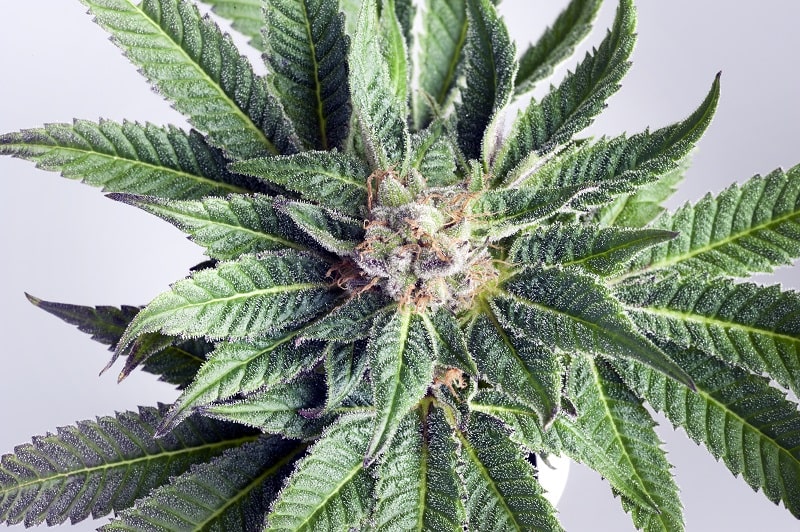Medical marijuana has made significant progress in recent years. Although cannabis has always held potent properties that lower blood pressure, alleviate anxiety, and settle certain forms of epilepsy, it wasn’t until recently that it gained acceptance from the global medical community. If you’re ready to take back your power when it comes to your health, learning more about cannabis and how it works is essential. An excellent starting point is learning the differences between Sativa and Indica.
At Go Shango, we’re often asked, “What is the difference between Sativa and Indica?” To dig deeper into this question, you first need to understand what they are. In a nutshell, they’re the two primary forms of medical marijuana. While they’re both highly functional, there are some differences you need to be aware of. Knowing more about them can help you make better decisions regarding your medical marijuana use and the strain you apply to your condition.
Neurotransmitters and the difference between Sativa and Indica highs
One of the key differences between the Sativa and Indica ‘high’ is the way they respectively affect neurotransmitters. At first, they start with the same mode of action. Medical cannabis targets the endocannabinoid system, which is a selection of receptors that kick into action when they encounter cannabinoids. Stimulating endocannabinoid receptors is what generates the psychoactive responses to medical marijuana. There’s evidence to show that stimulating this system results in the mediation of signaling pathways in the Central Nervous System (CNS), which includes the brain.
It’s the brain’s reactions where we see the best differences between Sativa and Indica highs. Sativa has been found to reduce the brain’s reuptake of serotonin. In other words, it acts like the SSRI class of antidepressants, such as Fluoxetine and Sertraline. By boosting the amount of serotonin that’s present in your brain, the right dose of Sativa has anti-depressant effects. Regulating your serotonin levels also makes it easier for you to concentrate, eat, and sleep. If you’re experiencing mental fog as a part of your depression and finding it hard to learn as a result, using Sativa to boost your serotonin levels could change that. This also means that Sativa is useful for treating anxiety.
In contrast, Indica may prove better for boosting your dopamine levels. Unlike substances such as stimulants, caffeine, and even junk food, Indica marijuana does not do this directly. Instead, the way it stimulates the endocannabinoid system results in the modulation of a neurochemical called GABA, which then regulates dopamine release. For those who see cannabis as a substance that sends users into a sleepy haze, this may be surprising: more dopamine means you find it easier to concentrate. Theoretically, this could make Indica very useful for treating anxiety. As anybody with the condition knows, anxiety can make it difficult to focus on the moment at hand because your mind is in the future. With more dopamine on board, this is less of an issue.
Sativa vs Indica for chronic pain
When it comes to treating chronic pain, the traditional pharmaceutical world is sadly lacking. Conditions such as fibromyalgia remain poorly understood, resulting in many patients taking ineffective painkillers that place them at risk of addiction. Understanding the differences between Sativa vs Indica can help you treat both chronic and acute pain. As both have different modes of action, the way you choose yours will vary according to your condition.
Indica may be better for muscular pains
Those who use the Indica form of medical marijuana report experiencing reduced muscle spasticity. This means their muscles are less tense and tight, which can provide some relief when you’re recovering from muscular pain. At present, the evidence for reduced muscular pain is primarily anecdotal. The exact mode of mechanism isn’t known, although the number of anecdotal reports is high enough for them to be taken seriously.
As Indica is more reliable for muscular pain, it can come in handy when treating long-term conditions such as Multiple Sclerosis (MS). However, it’s important to only apply it to cases where MS does produce muscular pain, as this isn’t characteristic of every case. Additionally, you may find that Indica cannabis proves useful when treating acute muscular conditions, such as backache arising from an occupational injury. Finally, you can consider using it for a narrow selection of nerve-related pains. The best example of this is compression of the sciatic nerve, where tension around the piriformis muscle may make this compression worse but achieving relaxation of the piriformis muscle could make it better.
Using Sativa for treating chronic pain
Although it’s possible to use Indica for chronic pain, there’s some evidence to suggest that Sativa may provide more effective and faster acting relief. One small study focusing on the use of Sativa extracts in rats experiencing neuropathic pain had a couple of interesting findings. Sativa extract tends to remain potent beyond first past metabolism, which is where the liver breaks down any drug’s useful products. This indicates that a high level of the useful elements of Sativa extract remain available for use by the body and they make their way around the circulation quickly and without interruption.
Second, the study highlights how Sativa extract reduces neuropathic pain. Again, conditions such as fibromyalgia and chronic fatigue syndrome are poorly understood, so there’s potentially a rheumatological and neurological component to them. However, as Sativa extracts bind to the receptors that can prevent neuropathic pain, it is effective in treating certain chronic pain conditions. Additionally, the same study highlights how it reduces the activity of some pain-increasing proteins and enzymes, some of which are present in incredibly painful conditions such as trigeminal neuralgia and shingles.
The difference between Sativa and Indica’s effects on the gastrointestinal system
The gastrointestinal system plays an important role in our day to day lives. At the same time, it has the potential to wreak havoc. For those who suffer from conditions such as HIV or cancer, reduced appetite can lead them into a vicious cycle. When your appetite plummets and you don’t have enough nutrients onboard, your condition becomes worse. After this, your worsening condition may affect your appetite further, pushing you deeper into the cycle.
Both Sativa and Indica improve your appetite. However, as they do so in different ways, it’s worth understanding what their mechanisms of action are. As we discussed above, Sativa can reduce the reuptake of Serotonin. With more Serotonin floating around your brain, your appetite will benefit. Serotonin improves your appetite, which is why some patients complain about putting on weight when they begin taking SSRIs for depression.
In contrast, Indica has a solid reputation for boosting your appetite come-what-may. It’s known for being the best cannabis strain for doing so, which makes it incredibly useful in patients who have HIV or cancer. HIV can decrease appetite when patients experience side-effects such as oral thrush, which makes eating uncomfortable. If you have cancer, you may find that the cancer’s location or the treatment you receive result in nausea. As Indica can overcome nausea alongside giving you a powerful urge to eat, it should become your strain of choice if nausea is acting as a barrier to food.
With the differences between Sativa and Indica’s effects on appetite in mind, it should be easy to choose one according to your own perceptions of why you’re not eating. If you believe that eating is due to a mental block arising from anxiety or depression, try Sativa. Alternatively, if there’s a physiological cause, Indica may be the best choice for you.
Sativa vs Indica for high blood pressure
High blood pressure, also known as hypertension, is often a difficult beast to tame. Although there are plenty of pharmaceuticals out there that can successfully lower it, the effects are artificial. Until you address some of the lifestyle factors that are contributing to your condition, using pharmaceuticals is a band-aid at best.
Neither Sativa nor Indica will act as a direct treatment for high blood pressure. What they can do, though, is address some of the causes of it. Additionally, you need to focus on the immediate effects of either strain before choosing one. Most forms of marijuana will result in a moderate increase in blood pressure after you use them. Eventually, this will dissipate, and you may even notice a decrease.
Avoid Sativa if your hypertension is moderate to severe
Sativa’s initial stimulating effects are more pronounced than Indica’s. Because of this, you may find that the elevation in blood pressure that you experience afterward is difficult to tolerate. It could also prove dangerous if you’re in the earlier phases of your condition. At the same time, as Sativa has a strong connection with increasing mental relaxation, you may find that the long-term benefits in terms of stress reduction address one of your primary hypertension risk factors. It’s also worth noting that Sativa is the better strain for using at night time, and as insomnia is connected to higher stress levels, addressing your nocturnal disturbances could also have some benefits.
Choose Indica for the best high blood pressure benefits
When investigating Sativa vs Indica for high blood pressure, you may notice that Indica has higher THC levels. It’s the THC in Indica that allows it to relax your blood vessels slightly. As a word of caution, you may want to remember this if your blood pressure ever falls below an acceptable level, as decreased vascular resistance can make it fall even further.
If you do have high blood pressure, though, decreasing your vascular resistance will result in your blood pressure lowering slightly. When your heart has to pump against narrow and tight blood vessels, your blood pressure rises accordingly. So, although Indica may result in an initial and transient increase, it likely carries better long-term benefits than Sativa.
Choosing between Sativa and Indica for your headaches
When it comes to the differences between Sativa and Indica for treating headaches, there’s a clear winner: Sativa. States that operate a medical marijuana policy usually recommend strict dosing ranges for those who routinely suffer from migraines and can’t find an appropriate pharmaceutical treatment for them. Patients usually take around 0.1milligrams of Sativa per pound of body weight, or higher amounts when using an edible oil. It’s believed that Sativa proves effective, especially in migraines, because it has anti-inflammatory properties. As inflammation plays a role in inducing migraines and sinus pain, Sativa should act as your strain of choice when you’re a migraine sufferer.
Antibacterial and anti-inflammatory purposes
Finally, one area of medicine that doesn’t garner much attention when it comes to the differences between Sativa vs Indica is the anti-bacterial and anti-inflammatory benefits each one possesses. It’s believed that Sativa and Indica both have high levels of THC, but that THC is more active in Indica strains. THC comes with powerful antibacterial properties, at least with topical applications. Unfortunately, there isn’t much evidence documenting whether it proves as useful when you take it orally.
As for Sativa, it has both anti-bacterial and anti-inflammatory properties. As we just discussed above, it’s the anti-inflammatory component that probably makes it so useful when you’re experiencing a migraine or sinusitis. These anti-inflammatory properties could prove handy elsewhere, though. For example, when you’re wiped out with a virus it’s often the inflammatory cytokines that affect you spiking a fever. If you want to step away from NSAIDs or acetaminophen for a while, using a Sativa strain could provide the respite you need.
As you may have seen, the differences between Sativa and Indica matter the most when you’re addressing certain medical conditions. From the nuances of your anxiety and depression through to the type of pain you’re experiencing, each one has its own feature. Now that you know a little more about both types and what they can do, you can start choosing your medical cannabis accordingly. But, before you take the plunge, always discuss your health concerns with a medical professional first.


